Articles > Geography
Know Slovakia Largest Cities? Here are the top 25 to get you started.
1. Bratislava (Population: 478,040)
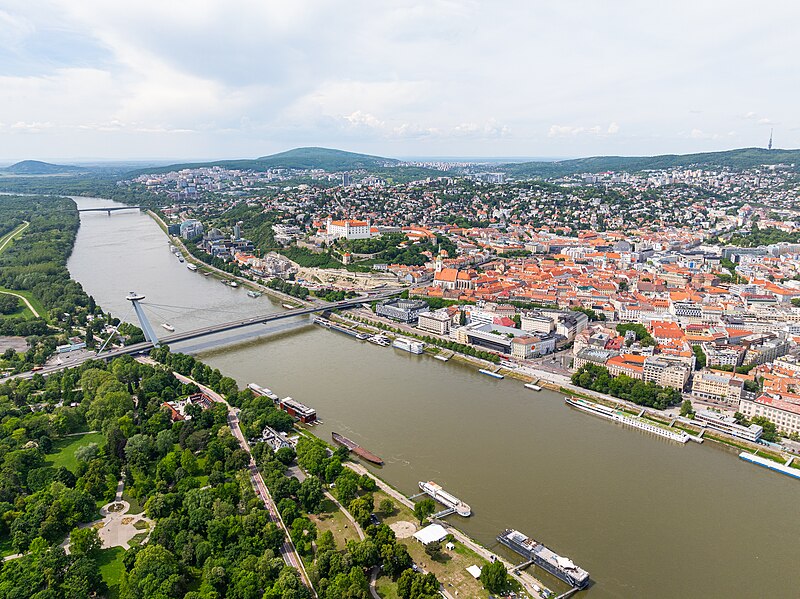
Bratislava, the capital and largest city of Slovakia, lies on the banks of the Danube and Morava rivers, directly bordering Austria and Hungary. This strategic location has made it a crossroads of cultures for centuries, reflected in its mix of Gothic, Baroque, and modern architecture. The city’s iconic Bratislava Castle overlooks the river and serves as a national symbol. Bratislava is also known for its vibrant old town, lively café culture, and proximity to the Little Carpathians, which provide outdoor recreation and vineyards. Today, the city is a political, economic, and cultural hub, home to Slovakia’s parliament, universities, theaters, and multinational companies. Its cosmopolitan character balances tradition with innovation, making it one of Central Europe’s most dynamic cities.
Interesting Fact:
Bratislava is the only national capital in the world that borders two independent countries.
2. Košice (Population: 225,044)

Košice, Slovakia’s second-largest city, is located in the east and is celebrated for its historical charm and cultural vibrancy. Its centerpiece is St. Elisabeth Cathedral, the largest church in Slovakia and a stunning example of Gothic architecture. The city’s long history includes Hungarian, Slovak, and German influences, shaping its multicultural identity. Košice was named European Capital of Culture in 2013, highlighting its theaters, museums, and thriving arts scene. Industrial development also plays a key role here, with a strong presence in metallurgy and engineering. Despite its modern growth, Košice retains a walkable historic core with elegant squares and colorful façades, attracting both tourists and locals. Its blend of heritage and innovation ensures its continued importance as a Slovak powerhouse.
Interesting Fact:
Košice was the first city in Europe to receive its own coat of arms in 1369.
3. Prešov (Population: 82,286)

Prešov, often called the “Athens of the North,” is Slovakia’s third-largest city and an important educational and cultural center in the east. The city is noted for its beautiful historical core, lined with Renaissance, Baroque, and Gothic buildings, particularly around its main square. Prešov is home to several universities, theaters, and museums, which enrich its youthful atmosphere. The region is also famous for its winemaking traditions, especially the nearby Tokaj wine region, which adds to its appeal. Industry, particularly chemicals and textiles, supports its economy, while local festivals highlight its cultural heritage. Prešov balances tradition with modern development, making it an engaging place to live and visit. Its historic charm and lively student population give it a unique character in Slovakia.
Interesting Fact:
Prešov’s main street is one of the longest continuous historical squares in Slovakia.
4. Žilina (Population: 80,634)
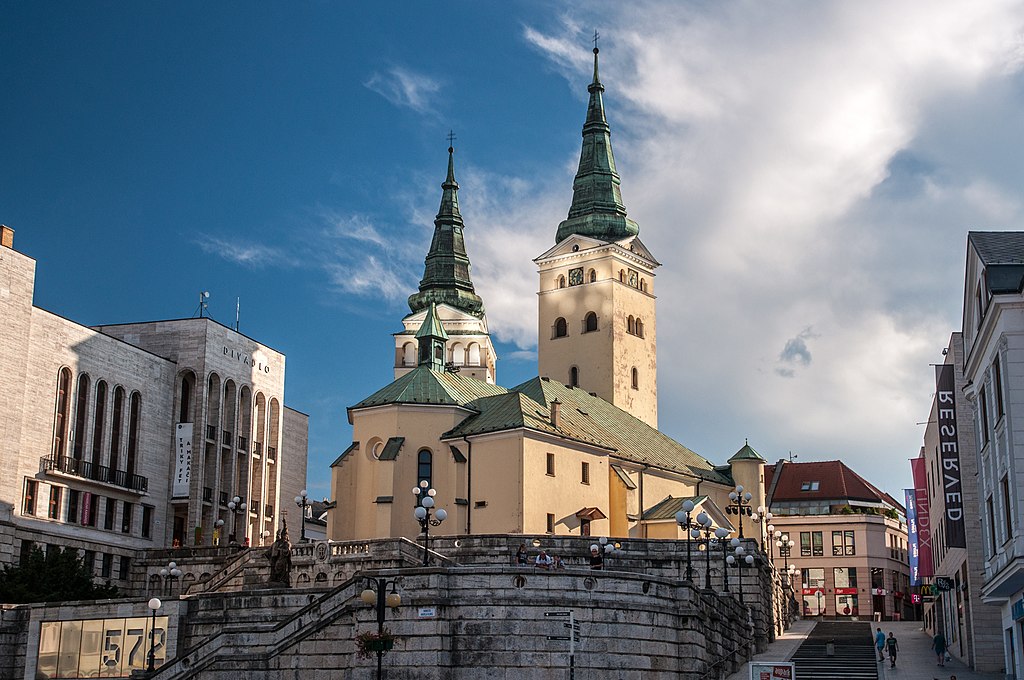
Žilina, in northwestern Slovakia, is an important industrial and transportation hub. Nestled near the confluence of the Váh, Kysuca, and Rajčanka rivers, the city is framed by the Mala Fatra mountains, making it both picturesque and strategic. Its economy thrives on engineering, electrical, and automotive industries, with Kia Motors’ large assembly plant located nearby. Žilina’s historical center features Mariánske Square, a charming area lined with Renaissance houses, cafés, and churches. The city is also known for its vibrant cultural life, with theaters, galleries, and a strong folk tradition. Its proximity to ski resorts and hiking trails makes it attractive for outdoor enthusiasts, while its universities and research centers bring a youthful energy.
Interesting Fact:
Žilina is home to Slovakia’s first trolleybus network, opened in 1994.
5. Nitra (Population: 76,499)

Nitra, one of Slovakia’s oldest cities, has roots dating back to Celtic and Roman times and was a major center during the Great Moravian Empire in the 9th century. The city is dominated by Nitra Castle, which houses the seat of the Diocese of Nitra, one of the oldest bishoprics in Central Europe. Today, Nitra blends history with modernity, serving as a hub for agriculture, food processing, and education. The city hosts major fairs and exhibitions, particularly in the agricultural sector, reflecting its strong ties to Slovakia’s farming traditions. Nitra’s lively cultural scene, with theaters, museums, and festivals, reinforces its importance as a regional center of heritage and progress.
Interesting Fact:
Nitra is considered the cradle of Christianity in Slovakia, with the first Christian church built here in 828 AD.
6. Banská Bystrica (Population: 74,065)
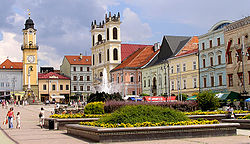
Banská Bystrica, located in central Slovakia, is surrounded by the Low Tatras and Kremnica mountains, giving it a scenic alpine feel. Historically, it was a major mining town, particularly for copper and silver, and its wealth is still reflected in the elegant architecture of the main square. The city gained prominence during World War II as the center of the Slovak National Uprising against Nazi occupation, with a museum dedicated to this pivotal moment. Today, Banská Bystrica is an administrative, cultural, and educational hub with a large university population. Outdoor recreation, cultural events, and historical tourism all contribute to its economy, while its location makes it a gateway to central Slovakia’s natural beauty.
Interesting Fact:
Banská Bystrica’s clock tower leans slightly, earning it the nickname “the Leaning Tower of Slovakia.”
7. Trnava (Population: 62,955)
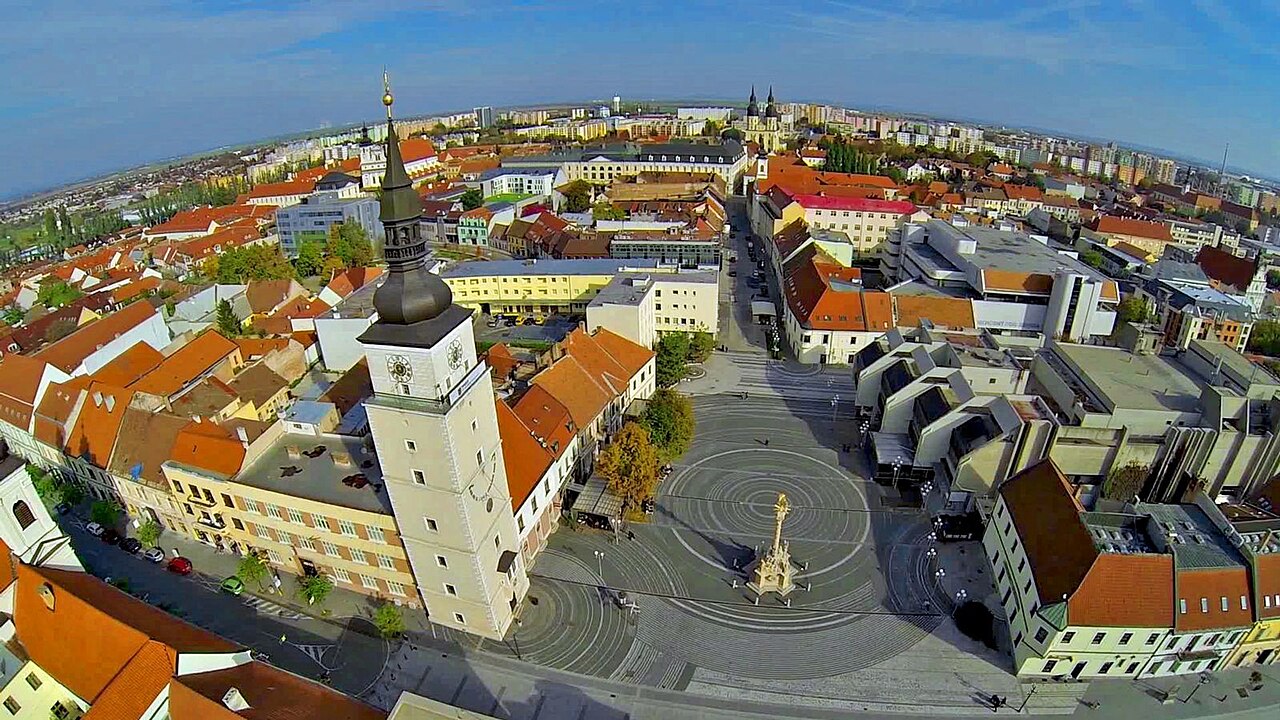
Trnava, often called “Little Rome,” is famous for its wealth of churches and religious institutions, reflecting its status as the seat of Slovakia’s oldest archbishopric. Its well-preserved medieval walls and historical core give it a distinctive charm. During the 16th and 17th centuries, Trnava was a major center of education and culture, hosting the first university in Slovakia. Today, the city is thriving economically, particularly in the automotive and electronics sectors, while also supporting a lively cultural scene with festivals, theaters, and galleries. Its location, just 50 kilometers from Bratislava, makes it a key regional hub that balances historic legacy with modern industry.
Interesting Fact:
Trnava was the first town in Slovakia to be granted free royal town privileges, in 1238.
8. Trenčín (Population: 54,065)
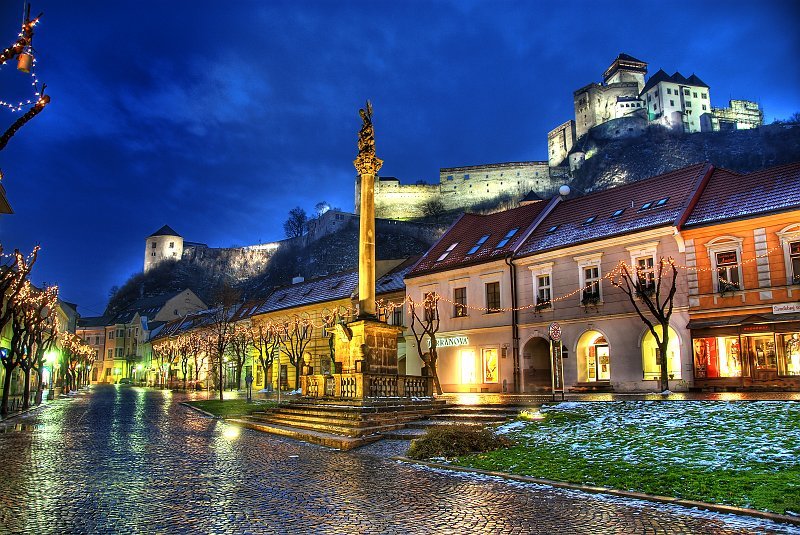
Trenčín is renowned for its imposing castle, which overlooks the Váh River and dominates the skyline. The castle, with Roman-era inscriptions still visible on the cliffs below, is one of the most important historical monuments in Slovakia. Trenčín has long been a strategic military center, but today it is better known for its cultural vibrancy and industrial economy. The city hosts the popular Pohoda music festival, which attracts international artists and visitors each summer. Its industries include textiles, machinery, and electrical equipment, supporting its growth. With a rich past and a modern cultural scene, Trenčín blends history and contemporary life beautifully.
Interesting Fact:
The famous Roman inscription under Trenčín Castle dates back to 179 AD, commemorating a Roman victory.
9. Martin (Population: 50,629)
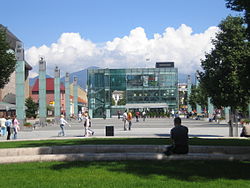
Martin, located in northern Slovakia, is often considered the cultural heart of the Slovak nation. It played a key role in the Slovak national revival of the 19th century, with institutions like the Slovak National Museum and Matica slovenská based here. The city has a strong publishing and literary tradition, and its cultural institutions continue to play a vital role in preserving Slovak heritage. Surrounded by mountains, Martin is also a hub for outdoor recreation, with hiking, skiing, and cycling opportunities nearby. Its economy benefits from engineering and textiles, while its historical significance makes it a destination for cultural tourism.
Interesting Fact:
Martin was declared the unofficial capital of Slovak culture during the 19th century national revival.
10. Poprad (Population: 48,741)
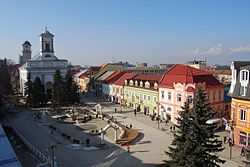
Poprad is known as the gateway to the High Tatras, Slovakia’s most famous mountain range. Its location makes it a key center for tourism, with excellent access to hiking, skiing, and wellness resorts. The city itself has a modern urban feel but also retains charming historical sections, particularly Spišská Sobota with its Gothic and Renaissance houses. Poprad’s economy benefits from tourism, light industry, and services, while its international airport connects it to European destinations. With breathtaking mountain views and a welcoming atmosphere, Poprad is both a vital economic hub and a favorite destination for nature lovers.
Interesting Fact:
Poprad’s AquaCity resort is one of Europe’s most advanced eco-friendly water parks, powered by geothermal energy.
11. Prievidza (Population: 42,980)
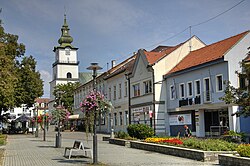
Prievidza, located in central Slovakia, is one of the country’s oldest settlements, with history tracing back to prehistoric times. Today, it is an important regional center, closely tied to nearby Handlová and Nováky in the Upper Nitra region. The area is known for coal mining and energy production, industries that have shaped its modern identity. Despite its industrial reputation, Prievidza boasts cultural richness, with theaters, museums, and architectural landmarks like the Gothic Church of St. Bartholomew. The city also benefits from its proximity to Bojnice, a charming spa town famous for Bojnice Castle, one of the most visited castles in Slovakia. This combination of industry and tourism makes Prievidza unique in its balance of modern economy and historic charm.
Interesting Fact:
Prievidza was first mentioned in 1113, making it one of Slovakia’s oldest documented towns.
12. Zvolen (Population: 39,453)
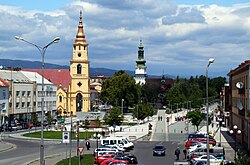
Zvolen, situated in central Slovakia, is a city steeped in medieval history. Its centerpiece is Zvolen Castle, built in the 14th century by Hungarian kings and later remodeled in Renaissance style. Historically, Zvolen was an important trade and military post due to its strategic location along the Hron River. Today, the city is known for its forestry and wood-processing industries, as well as higher education institutions specializing in technical and forestry studies. Zvolen is also a cultural hub, with theaters, festivals, and museums enriching its identity. Its location at the junction of major transportation routes strengthens its role as a regional center for commerce and industry.
Interesting Fact:
Zvolen Castle once hosted King Louis I of Hungary’s wedding in the 14th century.
13. Považská Bystrica (Population: 37,261)
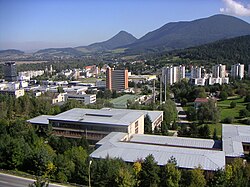
Považská Bystrica, located in northwestern Slovakia along the Váh River, is surrounded by rolling hills and striking natural scenery. Historically, the town grew as a regional trade center, but in the 20th century it became industrially significant, particularly for the production of machinery and automotive parts. The city also features cultural and historical landmarks, including the ruins of Považský Castle perched above the valley, offering stunning views. Today, it combines industrial strength with recreational opportunities, thanks to its proximity to the Súľov Rocks and Manín Gorge, making it a place where heritage and nature coexist harmoniously.
Interesting Fact:
Považská Bystrica is famous for the Manín Gorge, the narrowest canyon in Slovakia.
14. Nové Zámky (Population: 36,410)
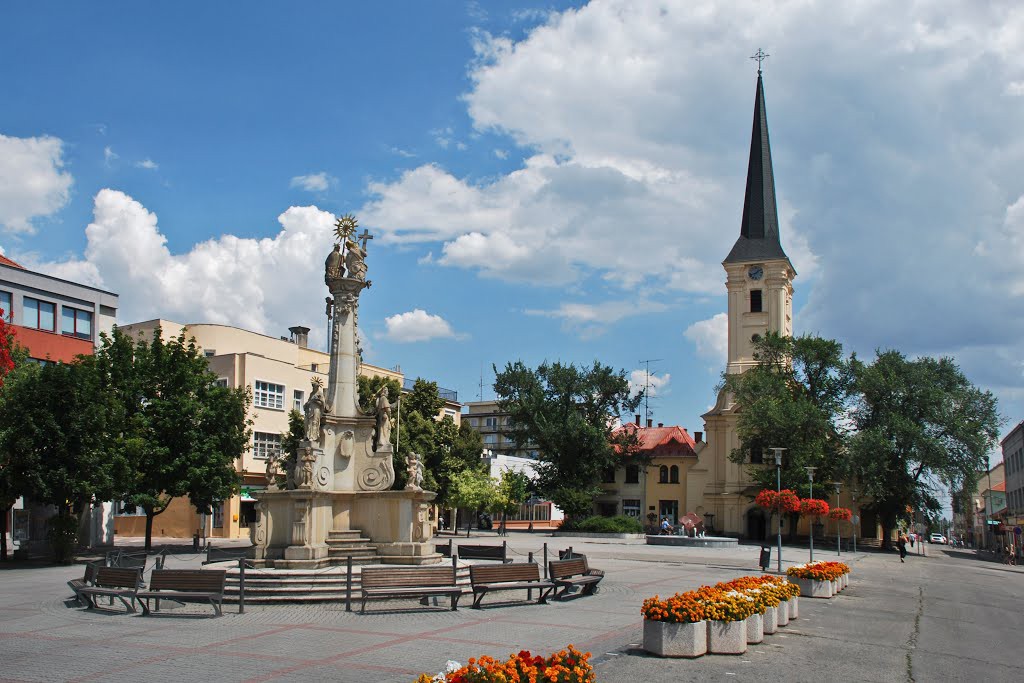
Nové Zámky, in southern Slovakia, was originally founded as a fortress town to defend against Ottoman invasions in the 16th century. Its hexagonal fortress was one of the most advanced of its time, though today only fragments remain. The city has grown into a commercial and cultural hub for the surrounding agricultural region, with a lively market and industrial sectors in food production and machinery. Its multicultural heritage, with Slovak, Hungarian, and other influences, enriches the local culture. Festivals, concerts, and historical commemorations highlight Nové Zámky’s dynamic identity as both a historic stronghold and modern regional center.
Interesting Fact:
Nové Zámky’s fortress was once considered one of the strongest in Central Europe.
15. Michalovce (Population: 35,584)
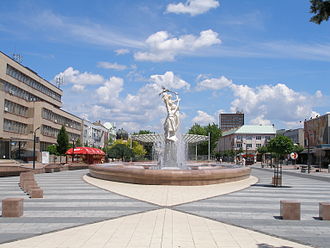
Michalovce, located in eastern Slovakia, is the gateway to the picturesque Zemplín region. It is particularly known for its proximity to the Zemplínska Šírava reservoir, one of the largest lakes in Slovakia and a popular recreation spot. The city has a diverse economy, including food processing, textiles, and mechanical industries. Culturally, Michalovce is home to the historic Vinné Castle nearby and features museums that showcase its regional heritage. Its vibrant festivals and folk traditions highlight the Zemplín identity. Michalovce is a growing regional hub that balances tourism, industry, and cultural preservation.
Interesting Fact:
Zemplínska Šírava near Michalovce is nicknamed the “Slovak Sea” due to its vast size.
16. Spišská Nová Ves (Population: 34,544)
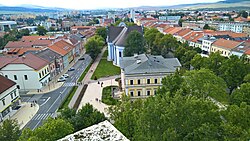
Spišská Nová Ves, in eastern Slovakia, is the cultural and economic heart of the Spiš region. Its town square, one of the largest in Central Europe, is lined with Gothic, Renaissance, and Baroque houses that testify to its rich history. The Church of the Assumption of the Virgin Mary features the tallest church tower in Slovakia, adding to the city’s skyline. Economically, the city thrives on tourism, engineering, and trade. It also serves as a gateway to the Slovak Paradise National Park, attracting hikers and nature lovers. The blend of architectural beauty and natural wonders makes it a standout Slovak city.
Interesting Fact:
The church tower in Spišská Nová Ves rises 87 meters, the tallest in Slovakia.
17. Komárno (Population: 32,114)
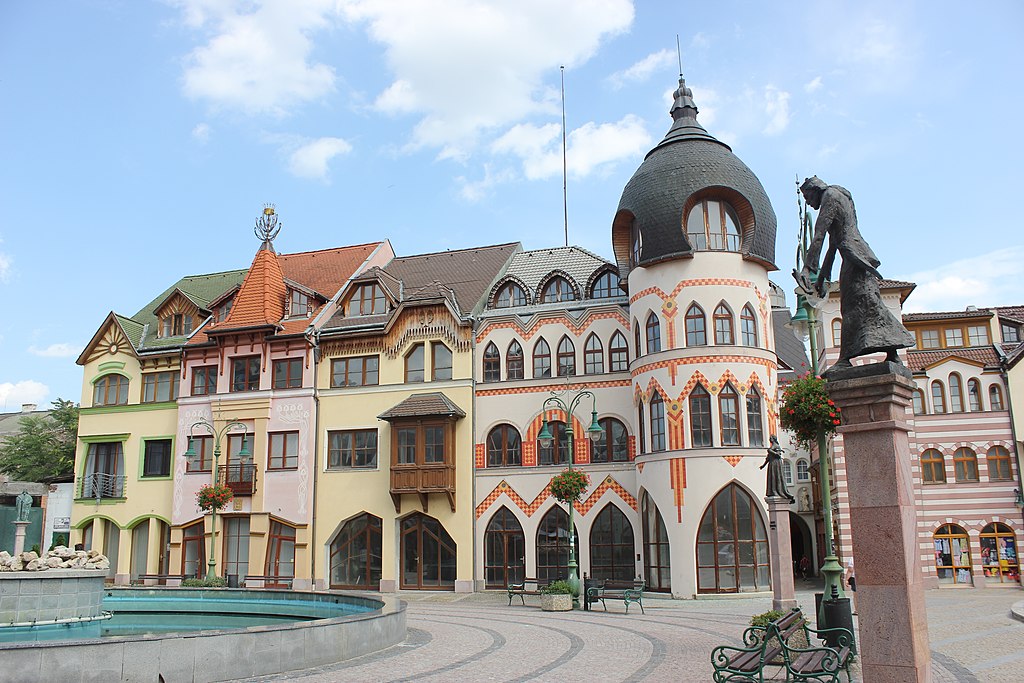
Komárno lies at the confluence of the Danube and Váh rivers, right on the border with Hungary. Historically, it was a significant fortress town that defended the Kingdom of Hungary from Ottoman invasions. Today, it retains its multicultural heritage, with both Slovak and Hungarian influences present in its language, cuisine, and traditions. Komárno’s fortress remains one of the largest fortification systems in Central Europe, drawing history enthusiasts. The city is also an important industrial hub, with shipbuilding, machinery, and trade contributing to its economy. Its border location makes it a vital link between Slovakia and Hungary.
Interesting Fact:
Komárno’s fortress is among the largest preserved fortification systems in Central Europe.
18. Levice (Population: 30,823)

Levice, situated in southern Slovakia, developed around its medieval castle, which still overlooks the town today. Historically, it was a vital defensive post and later a center of trade. Modern Levice has a diverse economy, with food production, textiles, and machinery leading the way. The city also serves as a cultural center for the surrounding agricultural region, with theaters, museums, and festivals adding vibrancy. Its mix of history and modern commerce makes it a significant city in southern Slovakia.
Interesting Fact:
Levice Castle was first mentioned in 1156 and played a major role in defending against Ottoman raids.
19. Liptovský Mikuláš (Population: 30,040)
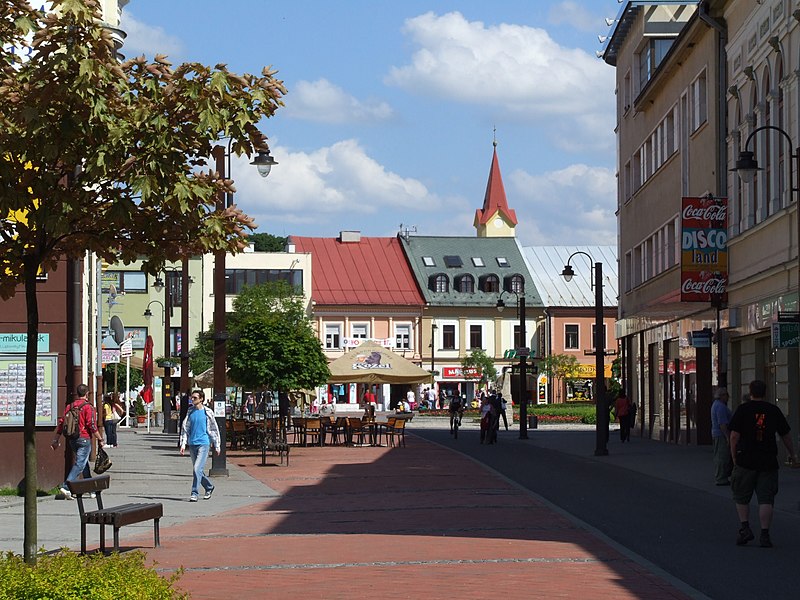
Liptovský Mikuláš, located in northern Slovakia, is a popular tourist destination thanks to its proximity to the Low and High Tatras. The city is known for its outdoor recreation, particularly skiing in winter and hiking in summer. Nearby attractions like the Demänovská Cave system and Tatralandia water park enhance its appeal. Historically, Liptovský Mikuláš was a center of Slovak national revival in the 19th century. Its modern economy benefits heavily from tourism, alongside light industry and services. The city combines natural beauty, history, and a welcoming atmosphere.
Interesting Fact:
Juraj Jánošík, Slovakia’s folk hero, was executed in Liptovský Mikuláš in 1713.
20. Humenné (Population: 30,006)
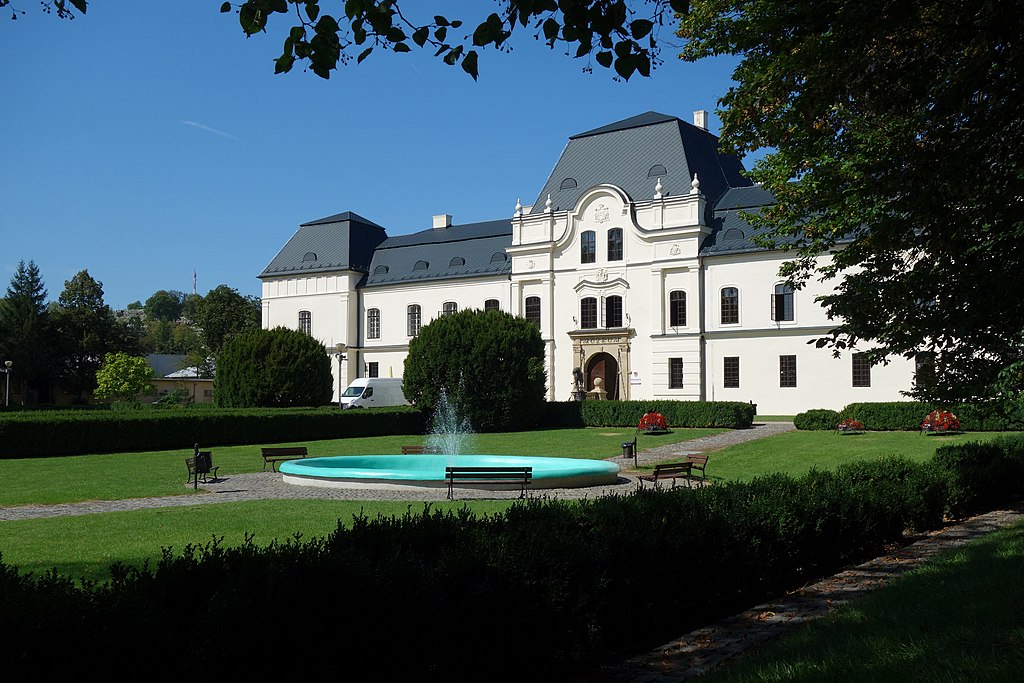
Humenné, located in eastern Slovakia, lies in a picturesque valley surrounded by hills and forests. It has a diverse history, with influences from Slovaks, Hungarians, Ruthenians, and Jews. The city’s Renaissance-Baroque manor house, now a museum, is a highlight that showcases its heritage. Modern Humenné has industries in textiles, machinery, and food production, while also serving as a cultural center with theaters and festivals. Its scenic setting and rich history make it an attractive city in the east of the country.
Interesting Fact:
Humenné’s manor house is modeled after a French chateau and today houses a museum of regional history.
21. Bardejov (Population: 29,964)
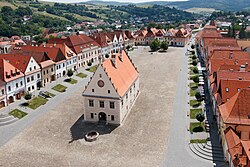
Bardejov, in northeastern Slovakia, is a UNESCO World Heritage Site due to its exceptionally preserved medieval town center. Its central square, flanked by Gothic and Renaissance burgher houses, along with the St. Egidius Basilica, create one of the most authentic medieval atmospheres in Central Europe. Historically, Bardejov was a wealthy trading town, and its heritage remains a major draw for tourists. Today, it also benefits from spa tourism, with the Bardejovské Kúpele health resort nearby. The city thrives on tourism, small industries, and cultural preservation.
Interesting Fact:
Bardejov was inscribed as a UNESCO World Heritage Site in 2000.
22. Piešťany (Population: 26,668)
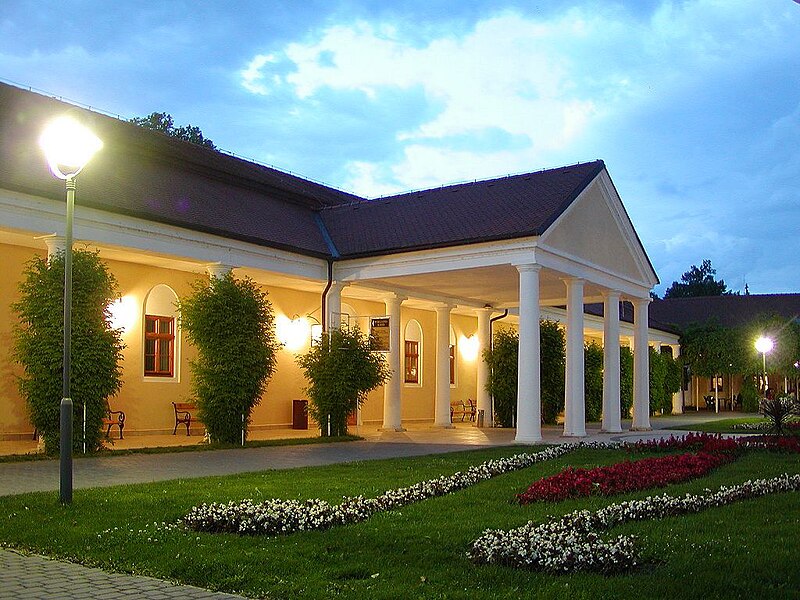
Piešťany, located in western Slovakia, is internationally renowned as a spa town. Its healing thermal waters and mud treatments attract visitors from across Europe seeking wellness and rehabilitation. The town’s elegant spa island, filled with grand hotels and treatment houses, is its defining feature. Beyond spa tourism, Piešťany is also a cultural center, hosting music and art festivals. Its reputation as a health resort has shaped its identity and economy, making it one of the best-known Slovak towns abroad.
Interesting Fact:
Piešťany’s symbol is a statue of a man breaking his crutch, representing healing and recovery.
23. Ružomberok (Population: 26,548)
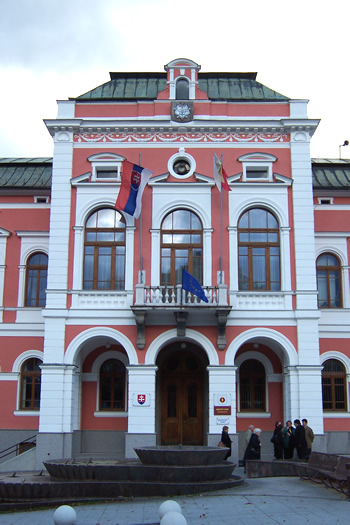
Ružomberok, situated in northern Slovakia, lies at the confluence of the Váh and Revúca rivers. Historically, it developed as an industrial center, particularly in paper and pulp production, industries that remain important today. The city also played a significant role in Slovakia’s national revival, being home to key cultural figures and movements. Surrounded by mountains, it offers excellent opportunities for outdoor activities, including hiking, skiing, and cycling. Ružomberok blends its industrial identity with strong cultural and recreational significance.
Interesting Fact:
The Slovak Catholic newspaper Katolícke noviny, one of the oldest in the country, originated in Ružomberok.
24. Lučenec (Population: 25,018)
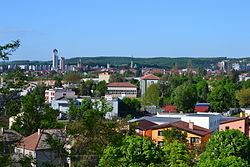
Lučenec, located in southern Slovakia, has historically been a multicultural town with Slovak, Hungarian, and Jewish influences. It developed as a trade and manufacturing hub, with textiles, ceramics, and food industries still present. The city’s cultural life includes theaters, galleries, and historical architecture, such as the Neological Synagogue, now used as a cultural venue. Its economy combines industry, services, and its role as a commercial center for the surrounding agricultural region.
Interesting Fact:
Lučenec’s Neological Synagogue is one of the largest in Slovakia and now hosts cultural events.
25. Pezinok (Population: 24,506)
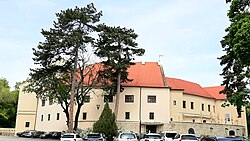
Pezinok, near Bratislava, is famous for its wine-making tradition, being part of the celebrated Small Carpathian wine region. Vineyards and wine cellars surround the town, and it hosts annual wine festivals that attract visitors from across the country. Historically, Pezinok was a free royal town, with privileges that supported its economic growth. Today, it thrives on wine tourism, small industry, and its role as a suburban center for people working in Bratislava. Its charming old town, cultural events, and viticulture make Pezinok a unique and vibrant city.
Interesting Fact:
Pezinok hosts the traditional “Pezinok Wine Festival,” celebrating centuries of local winemaking.




